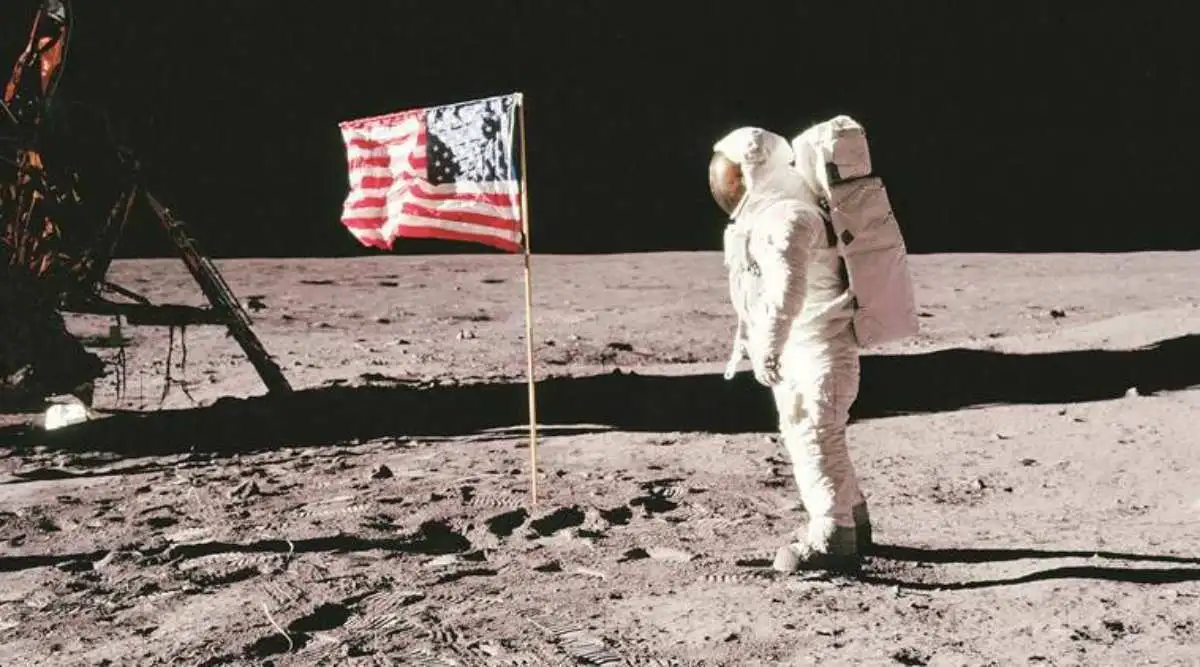

On July 24, 1969, all three astronauts came back to Earth safely. Neil Armstrong became the first person to set foot on the moon 50 years ago, on July 20, 1969. The two astronauts returned to orbit, joining Collins. They picked up bits of moon dirt and rocks. It seems like just yesterday we heard those famous words from Neil Armstrong, 'One small step for man, one giant leap for mankind.' That was July 21, 1969, nearly 40 years ago. His historic journey on Apollo 11 was chronicled in the 2018 film 'First Man,' starring Ryan Gosling. The first man to set foot on the Moon in 1969 was Neil Armstrong on the Apollo 11 mission. He and Aldrin walked around for three hours. Neil Armstrong became the first person to set foot on the moon 50 years ago, on July 20, 1969. The Moon has only been walked on by 12 people all American men. On July 20, 1969, Neil Armstrong became the first human to step on the moon. We came in peace for all mankind." Image Credit: NASA The sign the astronauts left on the moon says, "Here men from the planet Earth first set foot upon the moon July 1969, A.D. They landed on the moon in the Lunar Module. From the lunar module on the Moon, Aldrin reflected on the enormity of the occasion: This is the lunar module pilot. Neil Armstrong, Edwin "Buzz" Aldrin and Michael Collins were the astronauts on Apollo 11.įour days later, Armstrong and Aldrin landed on the moon. An estimated 650 million people watched Armstrong and Aldrin become the first men on the Moon, bearing witness to a historic event that will be remembered for years to come. Apollo 11 touched down on the moon on Jand Armstrong was the first to climb down the ladder uttering the historic words, Thats one small step for a man, one giant leap for mankind. They also had to come back to Earth safely.Īpollo 11 blasted off on July 16, 1969. He flew more 200 types of aircraft, from jets to gliders.
#THE FIRST MAN ON THE MOON FACTS LICENSE#
Neil Armstrong always wanted to be a pilot and got his pilot’s license when he was 16, even before getting his driving license.

Apollo 11's mission was to land two men on the moon. The first human being to walk on the moon was born on August 5, 1930, in Wapakoneta, Ohio. They were ready to put people on the moon. Learn the facts you didn’t know about the first time man set foot on the moon in this episode of Things You Wanna Know. Who Was The First Man On The Moon Neil Alden Armstrong, the first man to walk on the Moon. This post will present pictures, biography, fun facts, medals, stories, and everything there is to know about Apollo 11’s commander Neil Armstrong. Was NASA ready to go to the moon? The president and NASA knew they could do it. He was the first man to walk on the Moon. The United States had just started trying to put people in space. As Neil Armstrong was the photographer of the trip, almost all of. Kennedy was the president of the United States. Moon landing facts The objective of the Apollo programme wasnt originally a lunar landing. This video from NASA's Scientific Visualization Studio shows how it works.Astronauts Neil Armstrong, Mike Collins and Buzz Aldrin flew on the Apollo 11 mission. This means that one face will always be pointing towards Earth. It takes the same amount of time for the Moon to orbit the Earth as it does for it to rotate once on its axis (compared to Earth that rotates on its axis once every 24 hours and completes an orbit of the Sun in 365 days). So why do we always see the same side of the Moon? Because the Moon is tidally locked to the Earth. Yes, the Moon does indeed rotate on its axis, as well as orbiting the Earth. The Moon will move through waning gibbous, then third quarter, then waning crescent, and finally it will return to a new Moon.
#THE FIRST MAN ON THE MOON FACTS FULL#
After the full Moon, it slowly shrinks, which we call 'waning'. When it's half full, we call it the first quarter Moon, and when it's bigger than this but not yet full, we call it a gibbous Moon. However, when the Moon is on the far side of the Earth from the Sun, its day side is facing us completely, and we see this as a full Moon.Īfter the Moon is new, more of its surface will become visible in the sky as it orbits the Earth: we call this 'waxing', and it first becomes a crescent. If it's directly between the Earth and the Sun, then the Sun's light only falls on the side we can't see, and so we get a new Moon: it appears completely dark in the sky. The shape that the Moon appears to us on Earth depends on where it is compared to the Sun. The Sun's light will only hit one half of the Moon at a time, giving it a day side and a night side – just like on Earth.


 0 kommentar(er)
0 kommentar(er)
